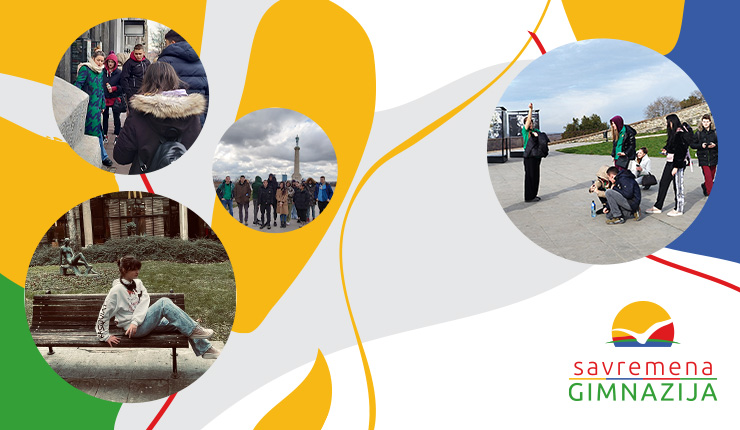
Second-grade students of Savremena Gimnazija had a lesson about Singidunum during which they visited different locations from Pionirski Park to Kalemegdan. Latin language teacher Natalija Stanković and Art teacher Zorana Milićević talked about the once powerful ancient Singidunum, which was built by the Romans in the 1st century AD.
 Where were the Romans buried, where were the baths and the temple of Jupiter located
Where were the Romans buried, where were the baths and the temple of Jupiter located
The students visited Pionirski Park, and from there they could see Bulevar kralja Aleksandra Street, the former Via Militaris that connected Singidunum with Asia Minor and other cities in Serbia where the Romans lived.
The Romans had the custom of burying the dead at the entrance to the city, so the side where the National Assembly was located was the solar part where men were buried, and the opposite side was the lunar part where women were buried. The students also spent time at Republic Square where they discussed the remains of the necropolis, and the tour continued along Knez Mihailova Street.
The plateau in front of the Faculty of Philosophy bears witness to the thermal baths that used to be located not only there but also on Student Square.
The building of the National Bank of Serbia is located on the remains of the former temple of Jupiter. Jupiter was extremely revered in Singidunum, and in front of the temple, there were a large number of altars and private houses. In front of the entrance to Rajićeva Shopping Centre, students could see the remains of a former Roman street.
What Kalemegdan looked like in the ancient period
The tour ended in the area of today's Kalemegdan, where the IV Flavian Legion was stationed, which formed a military camp (castrum). The camp was surrounded by pointed wooden posts (palisades), and the very entrance to the camp was in the area of today's Belgrade City Library, which can be seen from the remains in the Roman Hall. In addition to the walls of the fortification, you can also see part of the water supply system that brought water from the area of Mali Mokri Lug to the city.
In this way, the students memorised information more easily, noticed the remains of the Roman empire, which are all around us in the area of the centre of Belgrade and, by collaborating on a joint project, they explored the remains of ancient Belgrade.
Perspective and reconstruction of works of art
Along with Latin language classes, which were realised in this way, the students, together with their Art teacher Zorana Milićević, also visited the locations where the sculptures are located and discussed the perspective, as well as the reconstruction of the works of art. You can see some of the works here.

 Where were the Romans buried, where were the baths and the temple of Jupiter located
Where were the Romans buried, where were the baths and the temple of Jupiter located































